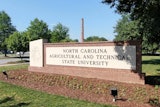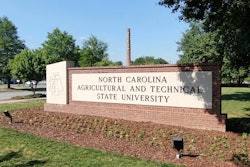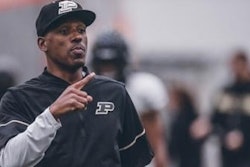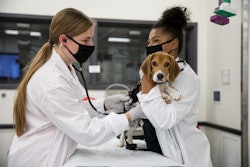When The College Board, the company who administers Advanced Placement (AP) courses and the SAT test to thousands of future college applicants each year, began developing the AP Computer Science Principles (AP CSP) course, they hoped to not only meet the growing need for computer scientists in the workforce but also address the systemic inequities in the field of science, technology, engineering and mathematics (STEM).
So far, results show that it’s working.
In a study of the high school graduating classes of 2016 and 2019, The College Board found the AP CSP course was attracting more diverse students. For the class of 2019, 68% of Black students, 59% of Latinx students, and 60% of first-generation students who were enrolled in AP CSP were engaging in an AP STEM course for the very first time.
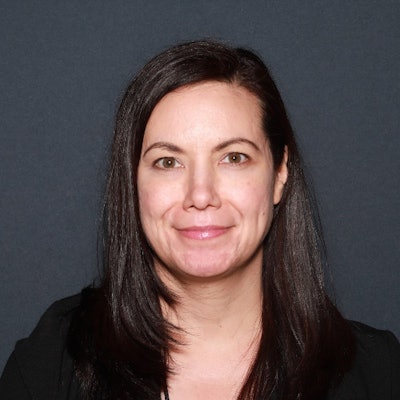 Maureen Reyes
Maureen Reyes
“In 2008, the National Science Foundation (NSF) approached The College Board and said, ‘[computer science course] numbers are holding low, and it’s mostly white and Asian males [who take it,]’” said Maureen Reyes, executive director of AP placement at the The College Board. NSF shared research that showed a broader introductory course to computer science could help bring in more diverse students.
“AP CSP was designed to take away barriers that may have existed previously,” said Reyes. “The only recommended prerequisite course is Algebra I, and that’s by design. It’s meant to say to students coming from that class, you already have the skills you need.”
AP CSP, first launched in 2016 in 2,500 schools, teaches the basics of computer technology, the internet, cyber security, and the rules of computer coding languages. It teaches students to think creatively when solving problems.
Now, in 2021, over 6,000 schools offer AP CSP.
Reyes said the creativity involved in this course, its broad computer science foundation, and the chance to collaborate and solve problems that students want to solve can be very attractive to diverse students. But getting those students to enroll takes more than just a student’s intellectual curiosity—it takes dedicated marketing and recruitment to increase awareness about AP CSP. So, The College Board has created resources and tips for recruiting.
“Half the battle is meeting students where they are,” said Reyes. “If you’re looking to recruit more female students, go to the girls’ basketball game. Help the parents understand, offer brochures for students and parents with more information.”
AP courses cumulate in an exam, which, depending on a student’s score, can offer college credit. While AP CSP has an exam, 30% of the score is determined by a project students work on throughout the class with a partner. Usually, students work together to build an app, just like ones they access on their smart phones or computers.
“They’re driving their own learning,” said Reyes. “The students are interested in what they’re building. In other courses, kids might not see how it applies to their lives. But in AP CSP, teachers are helping these students draw real life connections every day.”
Stephen Hernandez teaches AP CSP at the all-girls Our Lady of Lourdes Catholic Church and School in Miami, which received the 2020 AP Computer Science Female Diversity Award from The College Board. The award recognizes schools that help bridge the gender gap in computer science.
Lourdes Academy decided to transform their AP CSP course into a one semester class, giving more students the chance to dip their toes into computer science. So far, since 2016, over 500 students have taken the course, and Hernandez said he knows many students who have gone on to major in computer science in college.
The type of code taught depends on the teacher. Hernandez is teaching Python, one of the most popular coding languages used to create apps. But any coding language can be taught because, “if you can learn certain concepts within any programming, you understand the logic,” he said.
“Coding is a way of thinking. It’s problem solving. It’s not just for computer science, it helps you look at things from a different perspective and rethink how we organize,” said Hernandez.
Katie Cauffiel took AP CSP when she attended Kennesaw Mountain High School in Georgia. She is now in her second year at Georgia Tech, majoring in material science and engineering, and minoring in computer science.
“I had no experience with computer science, and I ended up really liking it,” said Cauffiel. “It starts out with you knowing nothing about computer science and computers, and you learn all of it. It’s great for someone who doesn’t have any experience. You’re not behind,” she said.
AP CSP, said Cauffiel, boosted her confidence. She was one of only a few girls in her class, so after finishing the course she began a computer science club at her local middle school just for girls. She taught them Scratch, the same block-based, free coding she first learned in her AP CSP course.
“I realized it was really cool and that other girls needed to know how cool this is,” she Cauffiel. “Often, computer science has this connotation that it’s for boys, the programmer stereotypes. I wanted to show girls it doesn’t have to be like that—it was fun, to show that computer science can be something different.”
Liann Herder can be reached at [email protected].

